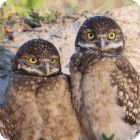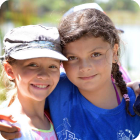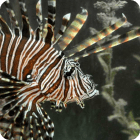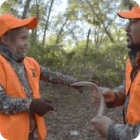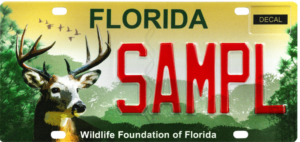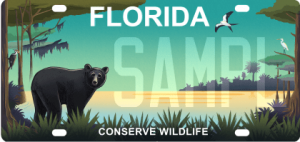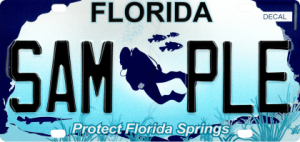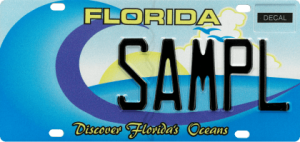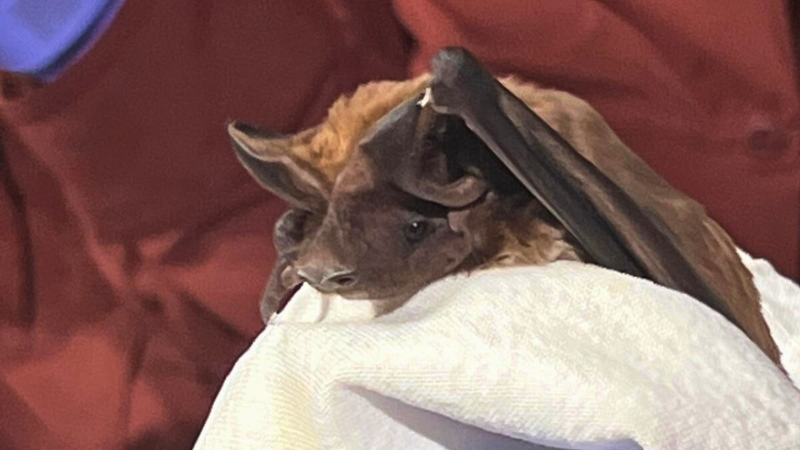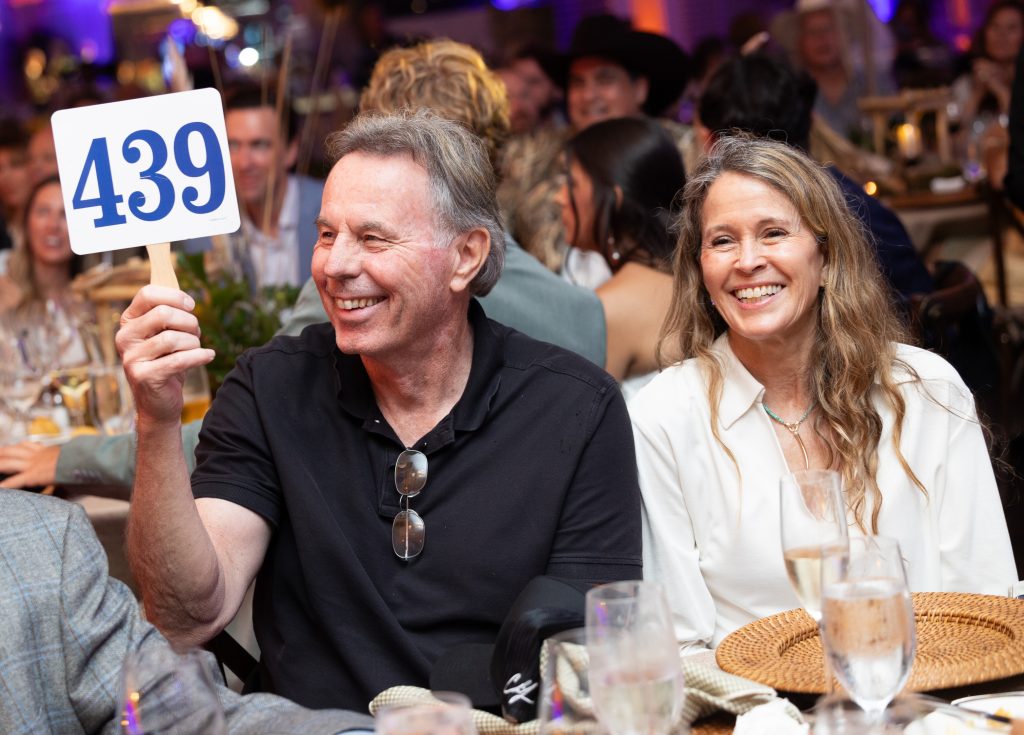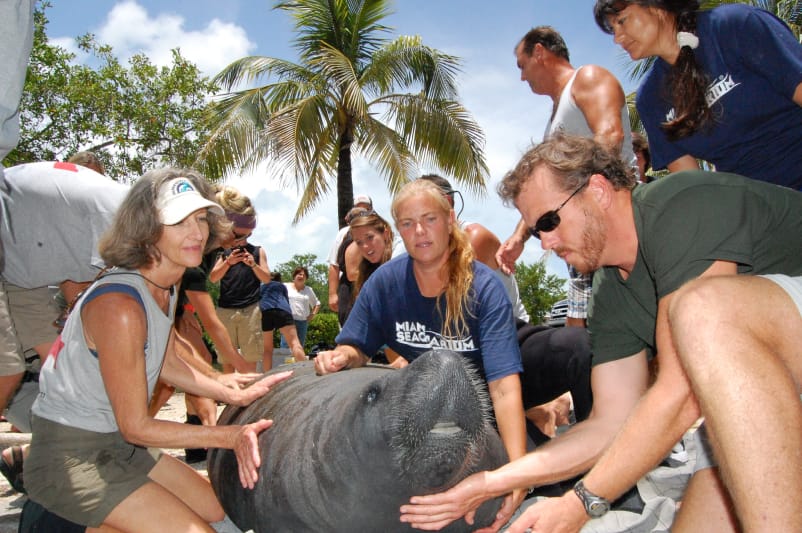
CLOSED FOR 2020
Contract amount
Up to $300,000; proposals above that amount with adequate justification may be considered. (Source: Caracara Fund, administered by the Fish & Wildlife Foundation of Florida)
Deadline for Submissions
Must be postmarked by September 18, 2020.
Project Goals
 To understand the demographic significance of gathering areas and communal roosts to the Northern Crested Caracara (Caracara cheriway; hereafter caracara) in order to better manage conservation and recovery of the species. To provide data to allow for development of a strategic plan for the species including:
To understand the demographic significance of gathering areas and communal roosts to the Northern Crested Caracara (Caracara cheriway; hereafter caracara) in order to better manage conservation and recovery of the species. To provide data to allow for development of a strategic plan for the species including:
- appropriate recovery goals and reclassification metrics;
- avoidance or minimization measures for development projects affecting habitat;
- monitoring protocols for recovery and regulatory use; and
- an indicator strategy from one or a few communal roosts to all roosts.
U.S. Fish and Wildlife Service Priorities
This project shall assist the U.S. Fish and Wildlife Service in meeting the following Recovery Goals (as discussed in the latest 5-year review, 2009):
- to understand the trends in spatial distribution relative to the species’ historic range;
- to understand habitat distribution and suitability; and
- to address the relevance of existing regulatory mechanisms.
Background
Aggregations of caracaras within several “gathering areas” and communal roosts have been documented in south-central Florida. Gathering areas are typically pasture and citrus land covers that simultaneously support large groups (i.e., 50+ individuals) of foraging, non-breeding caracaras during the daytime. Gathering areas have been observed
- along the Kissimmee River north of State Route (SR) 98;
- south of Old Eagle Island Road in northern Okeechobee County;
- south of SR 70 and west of Fort Pierce in St. Lucie County;
- south of SR 70 on the Buck Island Ranch in Highlands County;
- along US27 in the Fisheating Creek watershed; and
- near the intersection of SR 82 and SR 29 in Collier County.

Morrison (2001) suggested that gathering areas may be important to caracaras before first breeding during the first three years after leaving their natal territory. Dwyer (2008) indicated that gathering areas “do not appear to be defended by territorial adults and may provide important refuge from territorial adults during the day.” Gathering areas vary in size; therefore, likely support different numbers of non-breeders. Some of these non-breeders have adult plumage and are referred to as “floaters” (adult birds without a breeding territory). These areas seem to be regularly, but not continually used, and occur near communal roosts. At dusk, the birds move into communal roosts, which are usually palm-dominated forests, although scattered palms or cypress hammocks are also used. The photo at the top of this page is an example of a large group of caracaras near Fisheating Creek in a pasture and roosting in a dead oak tree (Elfenbein 2018).
 Dwyer (2010) identified 13 communal roosts in Florida. Counts of birds entering the roosts varied throughout the year, with the most in August. The below shows the average monthly data collected by Dwyer (2010) at the Buck Island Ranch roost during 407 surveys (August 2006 to December 2008). The number of caracaras counted entering the roost ranged from 6 to 304. Counts were conducted at eight roosts, but the effort varied as shown.
Dwyer (2010) identified 13 communal roosts in Florida. Counts of birds entering the roosts varied throughout the year, with the most in August. The below shows the average monthly data collected by Dwyer (2010) at the Buck Island Ranch roost during 407 surveys (August 2006 to December 2008). The number of caracaras counted entering the roost ranged from 6 to 304. Counts were conducted at eight roosts, but the effort varied as shown.
|
Roost Location |
Total Count |
# Survey Days | Average Daily Count |
| Arcadia #7 | 331 | 15 | 22 |
| Crewsville #6 | 187 | 17 | 11 |
| Immokalee #12 | 64 | 3 | 21 |
| Orange Hammock #1 | 181 | 8 | 23 |
| Buck Island Ranch #8 | 37169 | 407 | 91 |
| Devil’s Garden #10 | 477 | 16 | 30 |
| Fisheating Creek/ Lakeport #9 | 6 | 1 | 6 |
| Dinner Hammock/ Fort Drum #3 | 789 | 31 | 25 |
Non-breeding caracaras use multiple communal roosts that are very regularly spaced. This regular spacing may indicate a “preferred” or maximum distance that non-breeding caracaras will regularly fly. It may also be an indication of the distribution of suitable roost habitat. Individual non-breeding caracaras moved regularly among some of these sites (Dwyer 2010), and 10 of the 13 known communal roosts are within habitat identified as having high or very high probabilities of nesting caracaras (Smith et al. 2017).
Recently, a few tagged adult caracaras were recorded for a short time in late summer or fall using a communal roost. This represents previously unknown information about the behavior of the species, and the ecological significance of these movements is unclear. Dwyer et al. (2018) interpreted the ecological significance of communal roosts to caracaras as “central places from which non-breeders forage not for food, but for territories in a prospecting context.” Non-breeding birds maintain the numbers and distribution of a breeding population by replacing breeding individuals that die. The loss of a communal roost and/or fragmentation of its associated gathering area could both reduce non-breeder survival (via increased competition at remaining areas) and delay the re-occupation of vacant breeder territories by floaters from more distant communal roosts (reducing recruitment).
The size of a gathering area that is necessary to maintain its non-breeders and the ability to replenish the breeding population of the surrounding landscape is not known. Dwyer (2008) noted that approximately 50 percent of his telemetry locations occurred within 5 km of roosts, but he did not locate all tagged birds on all survey dates. The longest recorded distance traveled by mid-day from the roost of the previous night was 6 km (Dwyer 2010). He also reported that 95 percent of all telemetry locations occurred within 22 km of roosts, and that 25 km is the average distance between roosts. Because birds appeared to avoid crossing large areas of non-habitat (pine flatwoods, open water, or urban areas), he suggested that conservation actions should maintain habitat connectivity between roosts to maximize survival and recruitment.
Study Objectives
- What are the locations of the active communal roosts and gathering areas? Does each communal roost have an associated gathering area?
- What are the habitats that comprise the communal roosts and gathering areas? What is the proportional usage of these habitats by caracaras? What is the spatial extent of these habitats at each communal roost and gathering area, and what are the management implications?
- Are communal roosts and gathering areas ephemerally used if habitat does not change? Are Dwyer’s 2008 roosts still active – if not, why not?
- Is there enough specificity to delineate the difference between a gathering area and a communal roost or is this inappropriate terminology?
- What is the variability in magnitude of use over the seasons? Are some communal roosts and gathering areas more important, and if so, why?
- Do communal roosts and gathering areas serve a role in genetic diversity? How large do communal roost or gathering areas need to be to support recruitment and genetic diversity?
- What is the significance of the roosts and gathering areas for conservation and long-term persistence (recovery) of caracaras in Florida (if we lose any one roost, what is the demographic significance)? Can we lose some communal roosts or gathering areas and still have the species be sustainable over the long term? If so, which ones? How many might the species need to be sustainable?
- What is the best way to protect or conserve a communal roost or gathering area (e.g., disturbance buffers)?
- How many adult caracaras at the communal roosts and gathering areas are from breeding territories? How far do breeding adults travel to go to a roost or gathering area? What time of year are they at the roosts and gathering areas? What is the demographic and ecological significance?
Preliminary Expectations for Methods
Preference will be given to applicants that have a proven track record of publishing research on the movement ecology of raptors in peer-reviewed science journals. Ultimately the principal investigator(s) will determine the most suitable materials and methods, but at a minimum the expectations include:
- Survey and record the numbers of caracaras and other bird species using the roosts and gathering areas (include date, time, and preceding and current weather conditions), with the expectations of defining the boundaries and estimating a buffer (distance and vegetative cover) needed for conservation of the roost and gathering areas.
- To facilitate monitoring of bird’s movements across the landscape, we expect both breeders and non-breeders near known or potential roosts and gathering areas will be captured, tagged, and leg banded (personnel must be covered by an active 10(a)(1)(A) caracara recovery permit issued by the Service and a bird banding permit issued by the Bird Banding Lab). Number of birds to be tagged will be determined by applicant and based on appropriate statistical assumptions.
- Use ArcGIS and fieldwork to assess habitat type, condition, and spatial extent in and around the communal roosts and gathering areas; also, include how the caracaras use each habitat type.
- A detailed description of the proposed analytical methods. Applicants should demonstrate their proficiency in the most appropriate modern techniques. Analyses should be presented for each study objective.
Timeframe
Flexible due to COVID-19, but hope to begin fieldwork in October 2020, and finish data collection in October 2022.
Deliverables
- Meetings with Service, FWC, and investigators. A minimum of three meetings the first year (one prior to data collection, one during, and one after), followed by two meetings in each of the successive years. The investigators will also present findings (in person or on-line) to the Service and FWC upon delivery of the Draft Final Report #3 (as referenced below).
- A Draft Interim Report #1, which displays the data collected up to May 30, 2021 and discusses hypotheses and progress in answering the Project Goals and Study Objectives, due June 30, 2021. Use appropriate data and statistical analyses to support hypotheses and preliminary conclusions related to Project Goals and Study Objectives. Please include an assessment of any problems moving forward into Year 2. We realize site access may be difficult at some of these locations; therefore, document any issues where access is restricted and how that restriction might affect conclusions. Please include additional optional tasks that might answer Service concerns and further conservation of the species (associated funding increase would be considered). The Service and FWC will review and provide comments within 45 days for finalization of Interim Report #1, 30 days thereafter.
- A Draft Interim Report #2, which displays data collected up to May 30, 2022 and discusses progress in answering the Project Goals and Study Objectives; all associated data, metadata, and shapefiles; due June 30, 2022. Use appropriate data and statistical analyses to update hypotheses and preliminary conclusions related to Project Goals and Study Objectives. The Service and FWC will review and provide comments within 45 days for finalization of Interim Report #2, 30 days thereafter.
- A Draft Final Report #3 which displays all data and answers Project Goals and all Study Objectives; all associated data, metadata, and shapefiles; to be issued by April 30, 2023 (i.e., 6 months after field data collection ends). Use appropriate data and statistical analyses to support final conclusions related to Project Goals and Study Objectives and provide “next steps” for additional studies to support Project Goals. The Service and FWC will review and provide comments within 45 days for finalization of Interim Report #2, 60 days thereafter.
- Data should be provided in relational database such as Access, an ESRI geodatabase, a SQL-server compatible format, or similar. Data should not be provided in Excel or other spreadsheet formats.
- QA/QC’d raw data, as well as post-processing datasets (i.e., the final datasets on which the analyses were run).
- All SAS, SPSS, R or other relevant analytical code.
Proposal Inclusions (required, at a minimum)
- Receipt of proposal postmarked by the date on the announcement;
- A description of Materials and Methods to answer Study Objectives;
- An itemized cost breakdown (include matching funds if any); and
- Relevant experience for principal investigator(s) and staff/contractors.
Contacts
Submit technical questions to Steve Schubert or Heather Tipton.
Submit application to Anita Forester
Literature Cited
- Dwyer, J.F. 2008. Personal communication. Biologist. EDM International, Inc. Email to H. Tipton and S. Schubert. USFWS. December 22.
- Dwyer, J. F. 2010. Ecology of non-breeding and breeding Crested Caracaras (Caracara cheriway) in Florida. Ph.D. dissertation, Virginia Tech, Blacksburg, Virginia.
- Dwyer, J.F., J.D. Fraser, and J.L. Morrison. 2018. Evolution of communal roosting: A social refuge-territory prospecting hypothesis. J. Raptor Res. 52(4):407–419.
- Elfenbein, M. 2018. Personal Communication. Email with photo to D. Shindle, USFWS. August 2.
- Morrison, J.L. 2001. Recommended management practices and survey protocols for Audubon’s crested caracaras (Caracara cheriway audubonii) in Florida. Technical Report Number 18. Florida Fish and Wildlife Conservation Commission; Tallahassee, Florida.
- Smith, J.A., J.F. Dwyer, J.D. Fraser, and J.L. Morrison. 2017. A habitat model to aid the conservation of Crested Caracaras. Journal of Wildlife Management 81:712–719.
